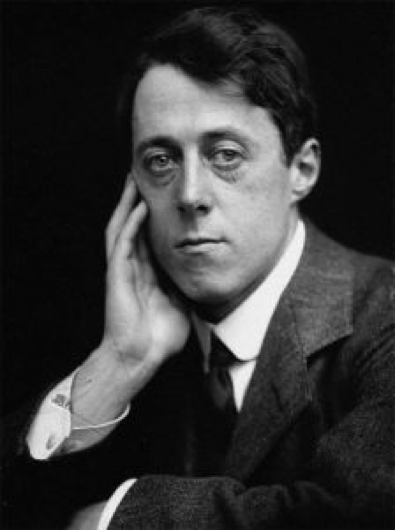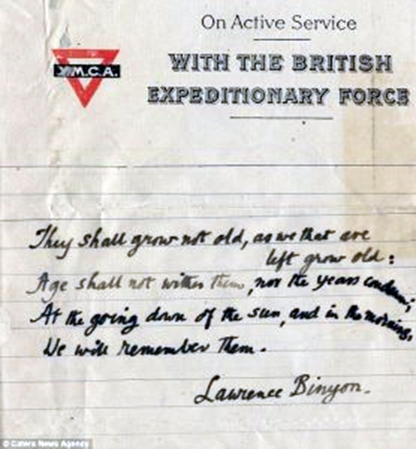July 2019
There are moments when we first gaze upon a work of art, whether in the pictorial or written form, and are drawn to its beauty and are inspired. The evocative lines of the Naval Ode combine to create such an occasion.
These two simple but disparate verses are often attributed to the English poet Laurence Binyon. While the second verse comes from Binyon’s tribute ‘For the Fallen’ extensive research has failed to find authorship to the opening verse which may well have come from an earlier folk song. Although of entirely separate derivations this unlikely but happy literary marriage serves us well.
 They have no grave but the cruel sea,
They have no grave but the cruel sea,
No flowers lay at their head,
A rusting hulk is their tombstone,
Afast on the ocean bed.
They shall grow not old, as we that are left grow old:
Age shall not weary them, nor the years condemn.
At the going down of the sun and in the morning,
We will remember them.
Laurence Binyon, the son of a Quaker pastor, was born on 10 August 1869. He was educated at St Paul’s School in London and read literature at Trinity College Oxford, winning the Newdigate Prize for poetry. His later career was at the British Museum where he became a published expert of oriental art. In 1904 he married historian Cicely Powell, and the couple had three daughters.
Profoundly affected by the horror of the Great War and the tragic number of casualties of the British Expeditionary Force, Binyon wrote his most famous work ‘For the Fallen’. This was composed while on the cliff tops of the rugged north Cornish coast. The stanza ‘They shall grow not old’ was written first and dictated the rhythmical movement of the whole seven stanza poem. The scholar did not have to look far for inspiration, drawing on Shakespeare’s description in Anthony and Cleopatra ‘Age cannot wither her, nor custom stale’. Binyon’s poem was first published in ‘The Times’ on 21 September 1914 and found widespread appreciation. Keen observers will note that the second line of the author’s manuscript remains faithful to the original text using ‘Age shall not wither them’ which was subsequently changed to ‘Age shall not weary them’.

In 1915, then aged 46, beyond the age of conscription and despite being a pacifist, Binyon volunteered to work as a hospital orderly caring for the wounded in France. After the war he returned to the British Museum and continued writing on art. In 1931 his two volumes of collected poems were published and in 1932 he rose to become Keeper (departmental head) of Prints and Drawings. The next year however he resigned from the Museum in favour of the Norton Professorship of Poetry at Harvard. He later returned to England and continued his academic work until he died in 1943.
In 1932 Lawrence Binyon was awarded the prestigious Order of the Companion of Honour (CH) for his outstanding achievement in the field of art. He is commemorated by a plaque in the Poets’ Corner at Westminster Abby.
Lest we forget.
Publication, March 2015 edition of the Naval Historical Review (all rights reserved)




